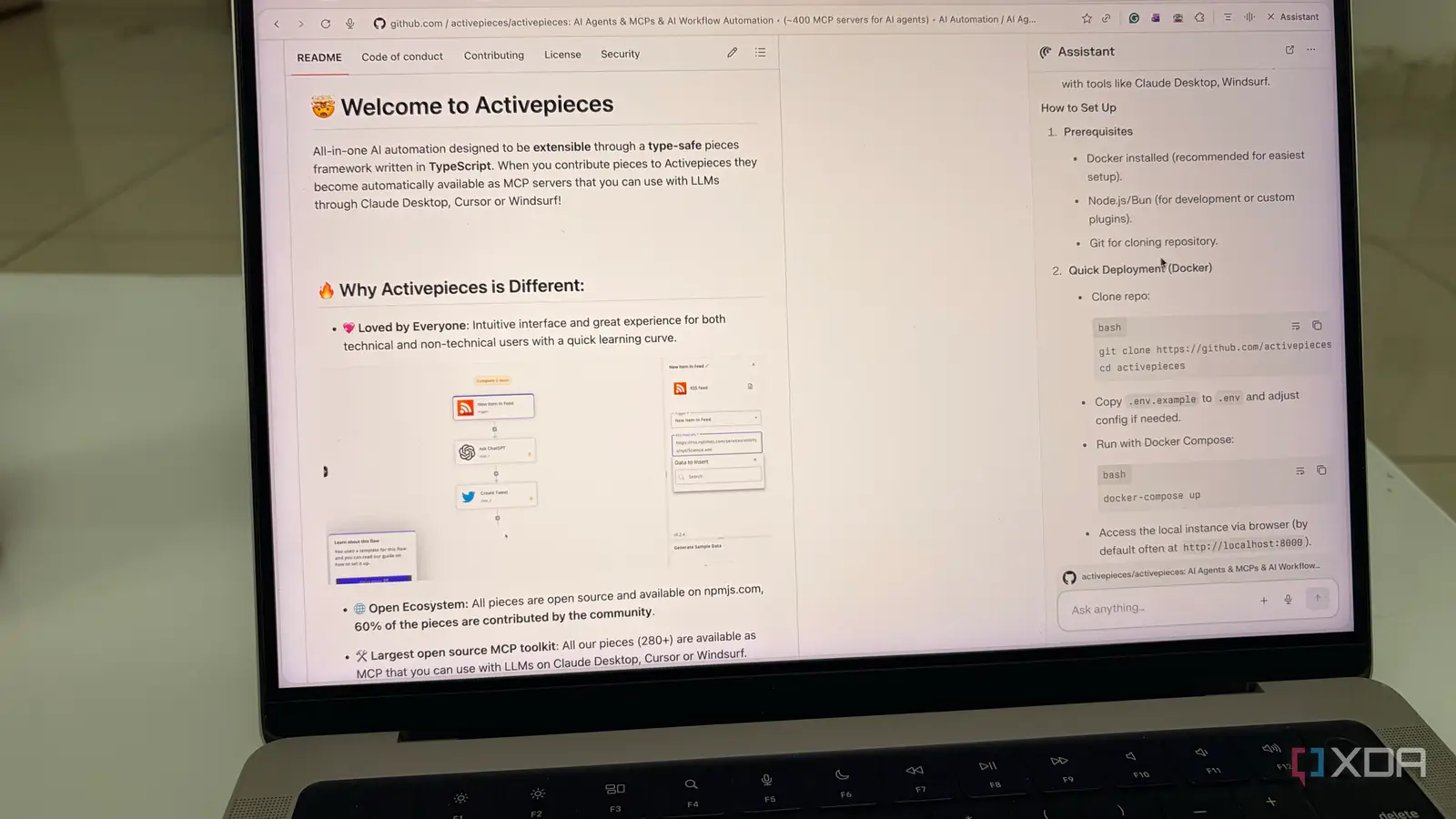Copyright XDA Developers

When it comes to self-hosting, the initial setup – navigating complex documentation, dealing with configuration files, and troubleshooting errors – can often be the biggest barrier to entry. I have been there: a dozen tabs open, switching between tutorials, Docker docs, and forum posts to get a simple service like Activepieces or Docmost running. But what if your browser could handle all that overhead for you? I recently decided to streamline my entire self-hosting workflow by using Perplexity’s Comet browser. Here is my experience with using this AI browser to deploy several new self-hosted services with speed and simplicity. Issues with the classic self-hosting setup Why we need a change The excitement of choosing a new self-hosted service – a fresh media server, a powerful documentation tool, or a handy network monitor – is almost drowned out by the reality of the setup process. I would open Docker Hub to find the image, then jump to the project’s GitHub Readme for configuration details. Next comes the inevitable Google search to figure out the specific port mapping for my reverse proxy. Suddenly, I have a dozen tabs open: one for the service’s official documentation, one for a Reddit thread on a specific error, one for a generic Docker tutorial, and, of course, the terminal window where the actual work is supposed to happen. This constant context switching is exhausting. I would be copying a command, only to realize I missed a crucial environment variable. Then the error loop begins: the container fails, I copy the cryptic error message, paste it into a search engine, and wade through outdated forum posts trying to find the one line of code that will fix everything. It's the sheer load that was burning me out. I wasn’t spending my time using the service; I was spending it fighting the administration of the setup. It became clear that the traditional methods of setting up self-hosted apps were no longer good enough for my home lab ambitions. Introducing Perplexity Comet More than a chatbot While there is no shortage of AI browsers out there, I decided to go ahead with Perplexity’s Comet browser. I realized almost instantly that this was not just a reskinned web browser; it’s a dedicated interface built for knowledge work. It was the first time I felt the browser was working for me, not just waiting for my next input. The most powerful features are seamlessly integrated on the side. If I land on a complex page, say the official HedgeDoc self-hosting documentation – which is great, but dense – I don’t have to manually summarize the information. I simply click the Summarize button in the sidebar, and in seconds, I have the entire Docker setup procedure boiled down to three key, actionable steps. The sidebar assistant is also genius. I can view one page and, use the dedicated chat window, ask a completely general question like, ‘What are the latest security considerations for self-hosted collaborative editors?’ I used this capability to great effect when setting up HedgeDoc, the collaborative Markdown editor that replaced Microsoft Word in my setup. I found the Docker Compose file on the official docs page, but I had questions about the environment variables for database configuration. Instead of opening a new tab and searching, I asked the sidebar the same, and it provided a sample pwgen command for my terminal. Setting up self-hosted services Many problems that Comet solved The real test of the Comet browser was taking on services that usually demand a complex setup. I didn’t just test it with simple single-command services; I went for complex, multi-component applications. For example, Activepieces is an amazing open-source automation tool, but like many complex self-hosted services, you need to deal with a multi-container Docker Compose file. I navigated to the installation page and simply instructed the sidebar to prepare a production-ready Docker Compose file for Activepieces and replace all default passwords with secure, randomly generated values. I even set up Docmost using the same trick. There is even an option to summarize YouTube videos using Comet. So if you are ever stuck with an installation and want to refer to a setup video on YouTube, you can use the built-in assistant to summarize the clip and get answers in no time. In every single case, Comet transformed the complex, frustrating setup process into a simple, high-level conversation. I was able to deploy these new tools with lightning speed. My new co-pilot Of course, this is just my experience of using Comet to get the job done. If you prefer another AI model or browser, feel free to try your luck with that. It used to be a four-hour deep dive into manuals and forum debugging, and now the whole setup took mere minutes.



